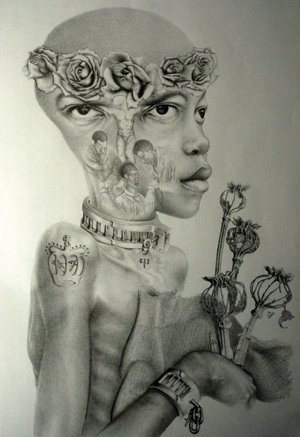Miriam Lewis explains the role of the arts in rehabilitation of offenders and the prevention of reoffending

The Koestler Trust awards, exhibits and sells artwork by offenders, detainees and secure patients. We play a role in motivating offenders to take part in the arts. We receive more than 5,500 entries a year, from establishments throughout the UK and British prisoners overseas. The artworks are judged by arts professionals including Grayson Perry, Mike Leigh and Wendy Cope, who also give constructive feedback. All participants receive a certificate, and more than 1,000 awards are made, many with cash prizes. We sell the art at our exhibitions, with half the money going to the artist and the rest being divided between us and Victim Support.
Through the Koestler Awards, many of our entrants have found talents that they did know they had, and this recognition is an important step in their rehabilitation. Successful rehabilitation requires change on two sides: offenders need to change their behaviour and society needs to change its attitudes so that offenders can be reintegrated into jobs, education and communities. We work on both sides: the arts engage those alienated from society and creating work for exhibition gives them a chance to reconnect. The artworks are created with the knowledge that they will be seen, possibly by thousands of people. The artists have thought about their connections with the outside world and how their actions can affect others in a positive way.
We currently exhibit three times a year: in Scotland, in the northwest of England and in London. Our London exhibition features work from across the UK and is held at the Southbank Centre. Each year it is curated by a different group of people, reflecting the many sides of the criminal justice system. In 2010 it was curated by victims of crime, in partnership with Victim Support, and received 14,494 visitors. Trained by Turner Prize-winning artist Jeremy Deller, the curators designed the whole exhibition. Ray Donovan, father of a murdered son, said: “If something like this can turn prisoners’ lives around and stop them re-offending, then for victims like us it’s all worth it.” Our 2011 UK exhibition will be curated by magistrates.
For many years, the majority of attitudes on criminal justice have focused on serious offenders, and on punishment rather than rehabilitation. The Ministry of Justice’s new Green Paper, ‘Breaking the Cycle’, concentrates on reducing re-offending, with what it calls a ‘Rehabilitation Revolution’. The fact that the government has recognised this is great news for the charities that work with offenders, but to some extent they have missed the point. Cuts in government spending have meant that many prisons have closed their art departments entirely, with other forms of education suffering as well. While some might not see the connection between arts and reoffending, the work that the Koestler Trust does shows that artistic achievement raises the self-esteem of those who need it most. It helps offenders to express and understand their feelings, to develop their skills and self-discipline. In turn, this brings benefits to their families, communities, and the staff who work with them.
“Art to me is everything, it’s my drug, my lover, my place of refuge, it transformed me. It never occurred to me to try and paint, nor did it occur to my parents to encourage me, but I’ve arrived, albeit late!” said a resident of HM Prison Coldingley, who won the Monument Trust 2010 Scholarship Award for painting.
Miriam Lewis is Development Officer for the Koestler Trust. ‘Arts by Offenders and Secure Patients: The Co-operative Koestler Exhibition for the North West 2011’ is at the Contemporary Urban Centre, Liverpool from 4 to 27 March.
E mlewis@koestlertrust.org.uk
T 020 8740 0333
w www.koestlertrust.org.uk



